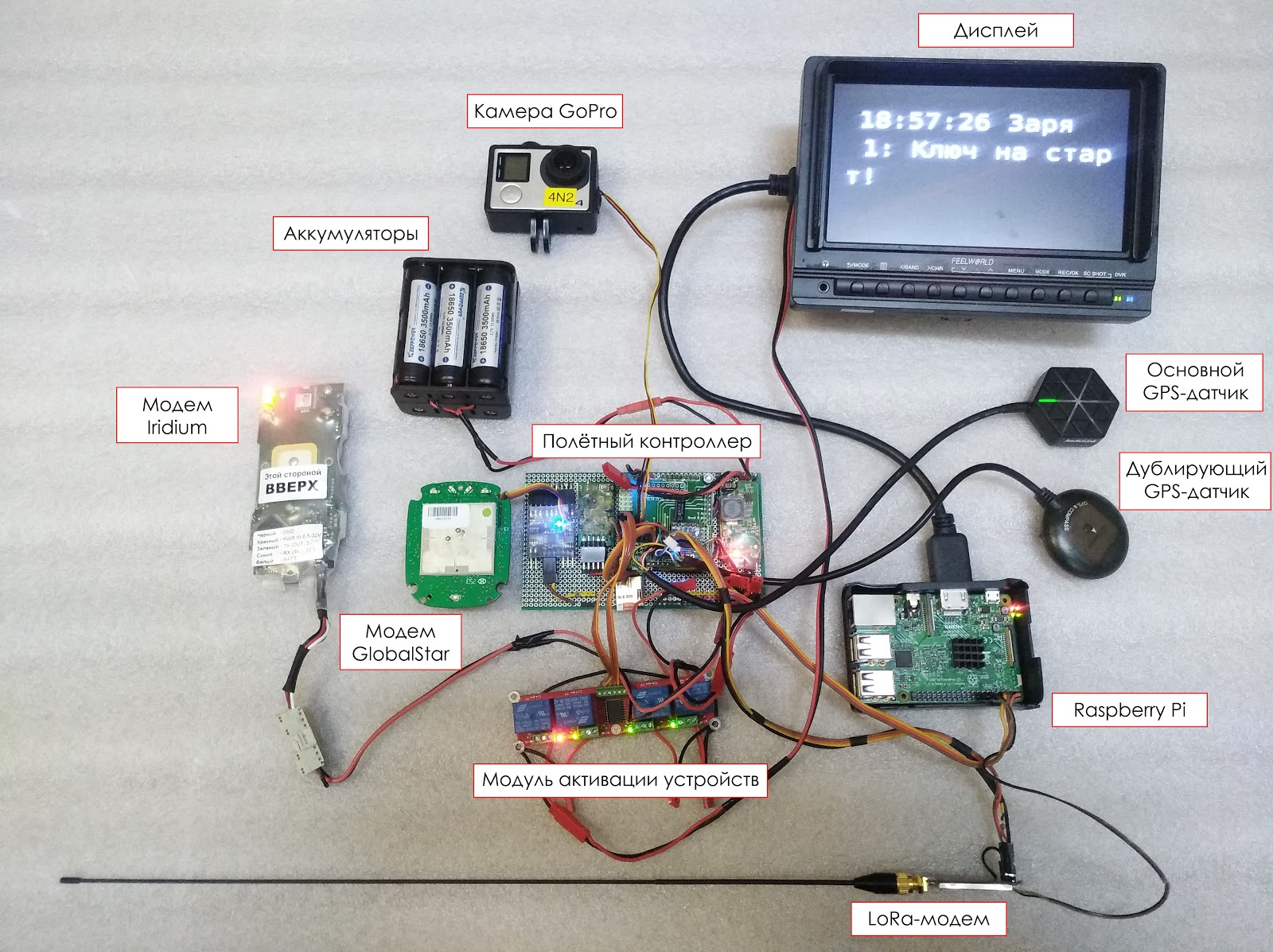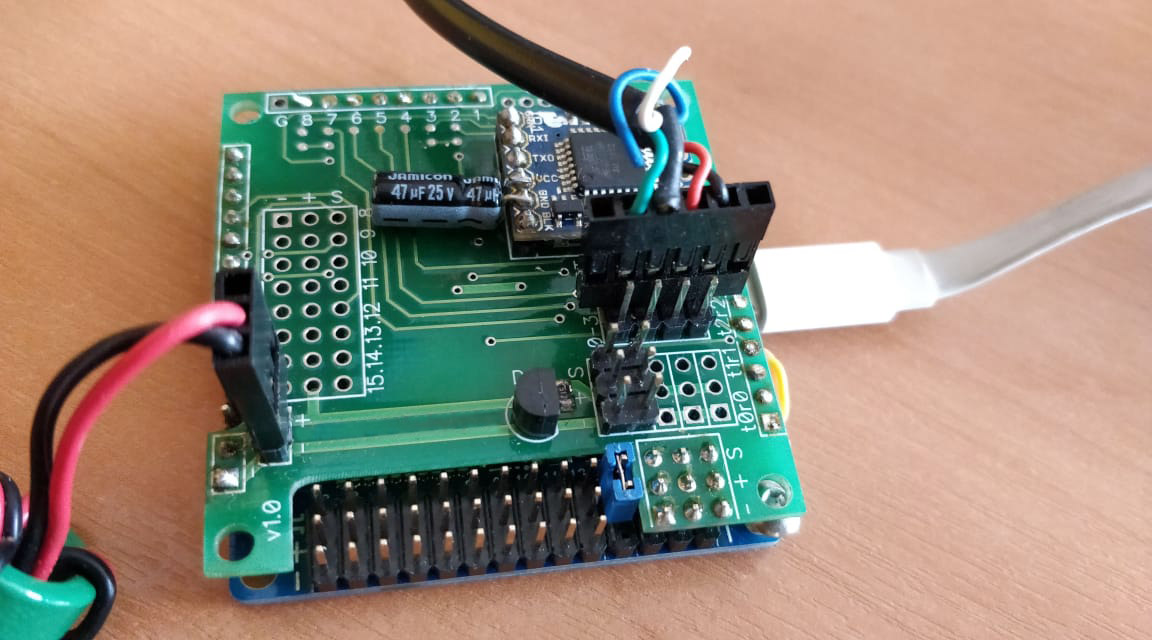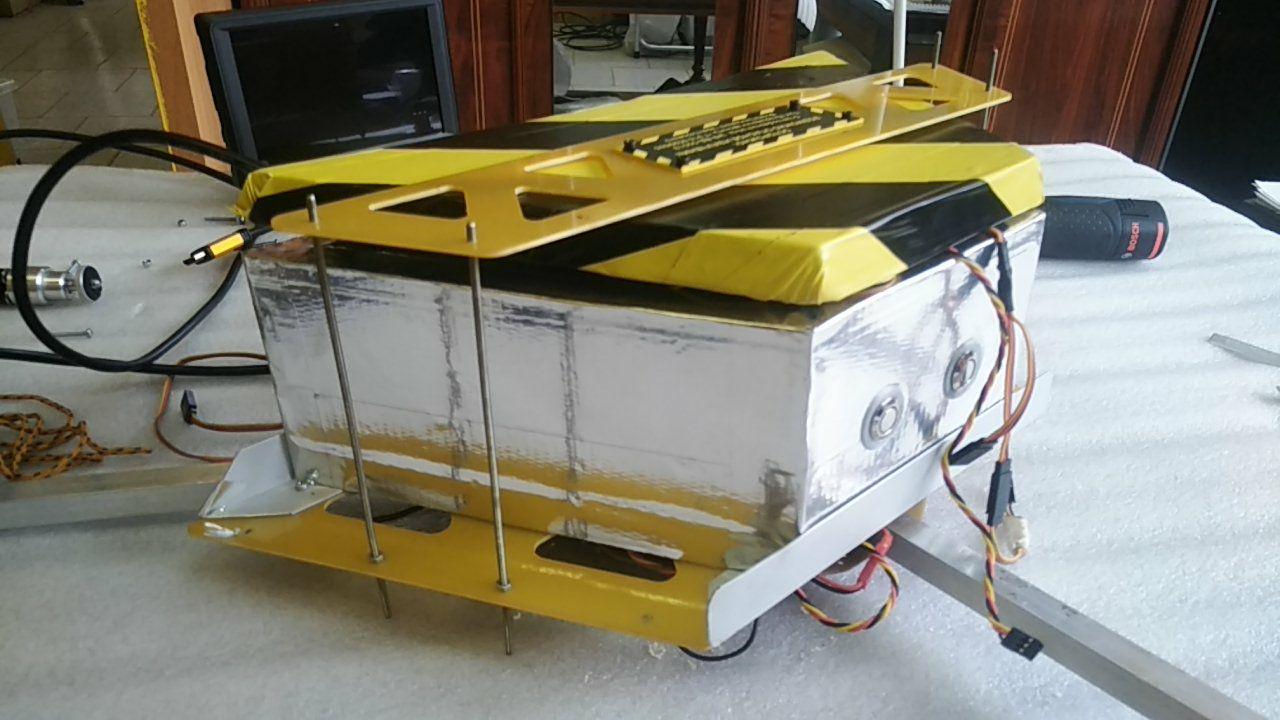Anatomy of the "Space Data Center". Sky-high server: look under the hood

Tomorrow we will send our server to the stratosphere. During the flight, the stratostat will distribute the Internet, shoot and transmit video and telemetry data to the ground. We wrote several times that we will tell about the technical side of our project "Space Data Center" (previously responded to the name " Server in the Clouds 2.0 "). Promised - execute! Under the cut a handful of pieces of iron and code.
Web server
Even in the past, the Server in the Clouds project, when we were climbing a full-fledged balloon with a crew of two people, it was not rational to take a full-fledged server with a battery assembly. And now we are talking about a small stratostat, which will have to climb 30 km, rather than 1. Therefore, we have chosen the same Raspberry Pi as a web server. This microcomputer will generate an HTML page and display it on a separate display.
Satellite connection
In addition to Raspberry, onboard will fly modems of satellite communication networks Iridium and Globalstar. As you remember, we planned to add the modem of the national network Gonets to the company, but we did not have time to receive it in advance, so we will send it on the next flight. Via satellite modems, the web server will receive your messages that can be sent on the project page . These messages will be transmitted to the Raspberry Pi, which will queue up and display on the HTML page.
')
Important point: the restriction on the length of a text message in Russian is 58 characters (including spaces). If the message is longer, it will be cut off during transmission. Also, all special characters will be cut from the text, for example,
/\+$%&;''""<>\n and the like.Since the Raspberry Pi has only one UART port, we will connect satellite modems through an intermediate hub, which will collect data from the modems and send to the Raspberry Pi.
Radio modem
All the messages received from you will not only be displayed by the web server on the display, but also transmitted to Earth via the LoRa radio modem. So we want to test the idea of distributing the Internet from the stratosphere (a tribute to the Google Loon project). Of course, our stratostat is not a full-fledged communication repeater, but even if its capacity is enough for stable data transmission, without large loss of information, then specialized systems will precisely cope with the distribution of the Internet from pre-cosmos.
Telemetry
In addition, we plan to display telemetry data on the same HTML page. Take them Raspberry Pi will be with a separate flight controller.

He polls various sensors that can be placed both inside and outside the hardware hermobox, collects information in a heap, combs it and conveniently gives to those who ask. In our case, ask Raspberry Pi. We will record pressure, altitude, GPS coordinates, vertical and horizontal speed and temperature.
Data from the flight controller is transmitted in long lines, which are then using this code:
$str = 'N:647;T:10m55s;MP.Stage:0;MP.Alt:49;MP.VSpeed:0.0;MP.AvgVSpeed:0.0;Baro.Press:1007.06;Baro.Alt:50;Baro.Temp:35.93;GPS.Coord:N56d43m23s,E37d55m68s;GPS.Home:N56d43m23s,E37d55m68s;Dst:5;GPS.HSpeed:0;GPS.Course:357;GPS.Time:11h17m40s;GPS.Date:30.07.2018;DS.Temp:[fc]=33.56;Volt:5.19,0.00,0.00,0.00,0.00,0.00,0.00,0.00'; parse_str(strtr($str, [ ':' => '=', ';' => '&' ]), $result); print_r($result); turn into an array in a convenient form for display:
Array ( [N] => 647 [] => 10m55 [MP_Stage] => 0 [MP_Alt] => 49 [MP_VSpeed) => 0.0 [MP_AvgVSpeed] => 0.0 [Baro rss] => 1007.06 [Baro_Alt] => 50 [Baro_Temp] => 35.93 [GPS_Coord] => N56d43m23s,E37d55m68s [GPS_Home) => N56d43m23s,E37d55m68s [Dst] => 5 [GPS_HSpeed] => 0 [GPS_Course] => 357 [GPS_Time] => 11h17m40s [GPS_Date] => 30.07.2018 [DS_Temp] => [f] .56 [Volt] => 5.19, 0.00,0.00,0.00,0.00,0.00,0.00,0.00 ) We will also transmit the telemetry data to Earth along with your messages. To do this, in the place of launch we will deploy the receiving station.
Display and Camera
So that you can make sure that the server really receives your messages via satellite connection, and that it flew to the stratosphere in general, and is not in our office, we decided to display all messages with telemetry on the display that GoPro will shoot. There was little time to prepare the project (but when is there a lot of it ?!), so we did not torture Aliexpress and the soldering iron, but instead took the finished device. For our needs it is more than enough. We connect the display to Raspberry via HDMI.
We also plan to broadcast the video from GoPro on a separate radio channel, but how it will work is not yet known - perhaps low clouds will greatly reduce the communication range. But in any case, after we find the stratostat that landed, we post the video from the camera and you can see for yourself what messages our “pre-cosmic data center” received and how high it climbed - telemetry will be displayed in the same HTML page, besides, a piece of the horizon will be visible.
Nutrition
All the beauty described above will be powered from the assembly of lithium batteries assembled according to the 3S4P scheme - three in series, four in parallel. The total capacity of about 14 A · h at a voltage of 12 V. According to our estimates, this should be enough, but after the final assembly, of course, we measure the actual consumption, and if necessary, let us throw more batteries.
Add to this all the GPS beacons, by which we will search for a stratostat landed. And the "house" for the server and other devices will be the fuse box.

It will save delicate equipment from temperature and pressure drops. At the same time, the radiation dose will be reduced, although this does not matter for our project, the server will fly in the stratosphere for too short a time, and the background there is not as high as on the ISS.
In addition to sending messages on the project site , you can participate in the contest and guess the landing site of the probe. The main prize is a trip to Baikonur to launch a manned spacecraft Soyuz-MS-13.
Source: https://habr.com/ru/post/447584/
All Articles
